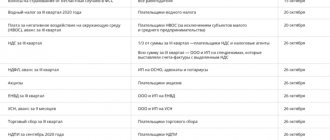Organizations that are located and operate on the territory of the Russian Federation are required to contribute tax fees to the state budget in many areas. One of the main fees in 2018 is corporate income tax. For organizations, it plays the main role; however, in some specialized taxation regimes it is not deducted to the treasury, since they require simplified accounting.
Like any other tax-related collection, deductions from profits are regulated through the following documents:
- Tax Code of the Russian Federation;
- legislative acts issued on the territory of specific subjects of our country.
In addition to the above-mentioned sets of rules and regulations in the field of tax legal relations, government agencies periodically issue various clarifications. Their goal is not additional regulation or the establishment of new norms beyond existing ones. These papers are designed to make the working life of accountants and lawyers working in paying companies easier.
Corporate income tax 2018
Procedure for calculating income tax in 2018
By nature, income tax is a direct tax. Its size is directly dependent on what achievements the company has achieved during the current tax reporting period.
Tax is calculated on the so-called net profit of the organization, which it receives at the end of the working period coinciding with the tax period.
Tax payers
The calculation of indicators in 2020 should have been carried out by certain entities that are also tax payers. These include persons from the following list.
Domestic companies, organized by our citizens in their native land. The obligation to pay income tax lies with each of them. However, as we have already mentioned, some firms are exempt from paying this particular tax due to the transition to a specialized tax regime. The modes can be the following:
Table 1. Tax regimes
| Tax regime | Meaning |
| A single tax on imputed income | When the amount of income is determined tentatively by the officials responsible for the procedure, and the funds are withdrawn regardless of how much money was actually received. |
| Simplified taxation system | It involves making a single payment to the state treasury, instead of transferring funds across several different collections. |
| Unified agricultural tax | A tax levy that can only be used by companies operating in the field of agriculture. |
| Patent system for transferring funds to the state treasury | A specialized regime suitable only for companies with fewer than 15 employees. |
In our special article we will cover the topic of income tax for LLCs, we will tell you who claims special conditions for paying the fee, how to calculate and pay it.
In addition, there are two more categories of corporate income tax beneficiaries. These include the following types of companies:
- entities whose field of activity is gambling business;
- companies participating in the domestic innovation project “Skolkovo Center”.
These organizations have a special status. In the gambling business, tax is levied on equipment, not profit, and innovative projects work for the benefit of the homeland, carrying out its scientific development, therefore, their activities are also not subject to income tax.
foreign counterparty companies , have obligations to transfer funds in favor of the state budget . The sources of income for such organizations are also located within the borders of our country.
Objects subject to taxation
Now that we have figured out who the payers of the tax levy we are considering are, we can begin to determine the objects subject to taxation.
The word “object” means the tax financial base, which serves as the basis for all necessary calculations of the amount of tax collection. It can be the following names.
- Cash received by the company as a result of the working period, that is, the revenue it earned, which is reduced by the amount of production expenses incurred by the company. This formulation of the taxable base is valid only for those firms that: are domestic;
- are not included in the category of consolidated payers of tax contributions to the state treasury.
We would like to draw your attention to one very important fact. It happens that a company does not receive revenue during a certain period of time, or simply does not have a profit. This circumstance may be associated with an economic crisis, problems at the enterprise, and many other random factors. In any case, if there is no profit, then there is no need to pay tax. This fact is valid due to the fact that there is no taxable financial base.
If there is nothing to tax, then there is nothing to pay
What are income and expenses
To understand well what net profit is, you need to understand the meaning of the two units that form it:
- company income;
- expenses incurred by the company.
Income is represented by cash receipts. They appear in the company for a reason, but because of its core activities. As a rule, this activity is of an implementation nature. In other words, the company is selling something. At the same time, any product can become an object of trade: food, clothing, cars, etc. In addition, the sales process can be aimed not only at the sale of specific items (goods), but also at:
- provision of any specialized services;
- carrying out work in various directions.
Let's give an example. Three organizations are located next to each other on the same street.
The first is a shop that sells confectionery products. Confectionery products are food products, and therefore traditional goods.
The second establishment is a beauty salon. It offers cosmetology services such as:
- massage;
- wraps;
- injection of subcutaneous fillers;
- other services.
The third establishment is the office of a construction company. The product of this enterprise is construction work, which, just like ordinary things, is sold to those who want to buy them.
In addition to the sales process, funds designated as income can also come to the company non-sales. For example, a company has some property that it transfers for temporary use to any person. In fact, such a transfer implies the execution of a lease agreement. Funds received from the tenant are also classified by law as income, which means that rental payments will be included in the profit-generating amount.
Income calculation is also carried out by companies subject to a simplified taxation regime, the organizational form of which is a legal entity.
When calculating corporate income tax, data on received income must be taken into account without:
- adding the amount of value added tax;
- accounting for excise taxes.
This nuance must be known to specialists working in the accounting department of your company. Otherwise, if you make incorrect calculations and determine a false value, you can end up in an unpleasant situation, which will ultimately result in two unpleasant, interrelated consequences:
- you provide false information to the tax service;
- the company you work for will receive an unpleasant fine for providing incorrect information.
The determination and calculation of taxes received are made on the basis of primary documentation. Other papers containing the necessary reporting are also used.
Those documents that record all financial receipts to the company’s account are suitable.
Now let's talk about costs. They mean the costs of a company, or its structural unit, which:
- have documentary evidence;
- are reasonable.
If everything is clear with the first point, then what is implied in the second?
Only those expenses of an organization that are aimed at its benefit, that is, used rationally, can be justified. For example, you didn’t have an automatic buttercream beater in your pastry shop. You purchased it and accelerated the production process, which influenced, although not obviously, an increase in the number of orders and goods sold. This improvement is justified, as it is aimed at technological improvement of the production process.
If you decide to take money from the company’s budget to pay the general director for a trip to the Maldives, the purpose of which is recreation, and not business meetings and concluding contracts, then such expenses will not be included in the list of justified expenses, which means that the taxable fee will be reduced by their amount. the base will not work.
The organization's expenses, as well as its income, are divided into two main groups.
Table 2. Main groups of expenses
| Group | Components |
| Costs aimed at improving the production and/or sales process |
|
| Costs not associated with the implementation process |
|
Direct costs are calculated at the end of each thirty-day calendar period. They are divided into the remains of production not completed, as well as the cost of products produced or services provided to the population. In other words, direct costs are determined in order to minimize the base subject to taxation that a particular company has in the process of carrying out sales operations with goods in the price of which these costs are taken into account.
The company making tax payments is obliged to independently prepare and determine a list of expenses that are of a direct nature, and then report on them by drawing up the necessary documents.
In addition, there is also a list of closed-type expenses. Such costs are not taken into account when determining the tax base, therefore, being able to determine them is also very important. The list you are looking for includes the following items:
- loan payments;
- insurance premiums, the payment of which was purely voluntary;
- cash receipts that are part of the profits of members of a joint-stock company or other type of organization, distributed among units of the composition according to the shares they own;
- funds contributed due to participation in the authorized capital of a company;
- payments to the treasury of funds received due to harmful emissions into the environment that exceeded the norm determined by law;
- assistance of a material nature that is provided to employees of the organization.
Formula for calculating income tax
We present the definition of the income tax formula to our readers in this section. Those of them who carefully read the above text should have remembered at least one of its components.
That's right, the first element of the formula for calculating the amount of tax collection on corporate profits is the financial base. In other words, it is profit, the difference between the income received and the company’s expenses incurred.
To correctly calculate the indicator we are interested in, however, we need to have information regarding not only the size of the tax base, but also the current rate.
Note! For the tax we are considering, there is a set rate, which also remained relevant in 2020. It is 20% of the profit.
Income tax rate - 20%
In the past 2020, the 20% collected from the taxpayer was divided into two parts. One of them was supposed to be sent to the federal budget, the other to the treasury of the region in whose territory the payer made the tax payment.
So, previously the ratio was as follows:
- the federal budget received 2% of the full amount (20%);
- the regional budget was replenished with the remaining 18%.
Today the ratio has changed slightly:
- the state budget is now replenished by 3% of the amount collected from the tax payer;
- the budget of the constituent entities of the Russian Federation receives the remaining 17%.
According to the government decree, regional authorities have the right to independently differentiate tax rates, depending on each specific case. This means that the profit rate can be lowered, however, only to the detriment of the regional budget. In any case, the federal treasury must receive the interest due to it.
So, based on the information received, we will determine the profit formula used to carry out accounting expenses in the organization:
Income tax fee = base subject to taxation * current rate.
If the profit coming to the company will be taxed at different rates, then the base will be calculated separately for each tariff.
For calculation, the tax base is taken as an incremental value; the reporting period is a calendar year, that is, it lasts from the first day of January of the current year to the thirty-first day of December of the same year.
Now let's look at the formulas that help us determine the tax base.
Formula No. 1. The formula helps calculate the profit received due to the implementation of the sales process. It looks like this:
Realization profit = the amount of income received from the sale of products or services - the total amount of costs of a production nature
As you can see, everything is quite simple. Money received due to sales and/or production is reduced by the funds that were spent on the same production. The epithet “net” is often added to profit. This is largely due to the fact that income is, as it were, “cleared” of costs and presented as revenue.
Formula No. 2. For transactions not related to the implementation process, the calculation formula will look similar, only the areas of income receipt and expenses will change. So, let's look:
Profit on transactions of a non-operating nature = the total amount of income received from the non-operating category - the total amount of costs also of a non-operating nature
As you can see, in both formulas we presented, expenses were subtracted from income received, it’s just that the areas in which this cash flow occurred differed. One is interconnected with the process of selling a product and its production (or purchasing, for example), the other has nothing to do with the product.
Formula No. 3. The last formula combines the quantities presented earlier by the formulas. With its help, we find the general value of the tax base, which is then used in the formula to calculate the amount of tax collection on the organization's profit.
Taxable financial base = operating profit + non-operating profit – losses subject to transfer to a specific time period
As you can see, companies have the opportunity to carry forward losses they receive. If they do exist, they must also be taken into account in the formula we present, otherwise the determination of the amount of tax will again be made incorrectly.
Please note a very important fact: when, when determining the amount of expenses, they exceed the amount of income received by the company based on the results of its activities for a specific reporting period, this one-year period is defined as unprofitable. What does this definition mean? Everything is very simple. If there is no income, then there is no income tax payment. Unfortunately, this is the reality of business.
A business can become unprofitable at any time
Let's give an example. Imagine that you are the owner of a small pastry shop. Let's say that in 2020, things weren't going well for you because the price of raw materials from your favorite supplier rose sharply, and you were forced to buy them at a higher cost. The costs you spent on this purchase, as well as other production areas, amounted to 300 thousand Russian rubles. At the same time, in order not to scare away customers, you had to sell confectionery products at the old price. As a result, the company's revenue amounted to only 275 thousand Russian rubles. Let's determine whether there was a profit: 275,000-300,000 = - 25 thousand rubles - this is the loss of your company. This means that there is no tax base. There is no profit, and there is also nothing to calculate tax collection from.
To determine the tax base, it is necessary to be guided by certain points of the main set of information on tax legal relations in the Russian Federation - the Tax Code. In addition, it is important to take into account the peculiarities of the activities carried out by tax payers.
While the tax period, that is, the calendar year, lasts, companies are obliged to:
- transfer advance payments to the state budget;
- submit declaration forms filled out with the necessary information to the department of the Federal Tax Service for verification.
Examples of determining the amount of income tax
So that after reading the article you can independently make simple calculations of corporate income tax, we will give you some interesting examples. Use them later as a sample, simply substituting the information you have into the presented calculations.
The higher the profit, the higher the tax
Example No. 1
So let's say you are a manager. In 2020, your organization sold products in an amount equal to one and a half million units of national currency.
The company's general expenses associated with the implementation process, in turn, amounted to 950 thousand Russian rubles.
The amount of income classified as non-operating was only 15 thousand Russian rubles for the taxation period under review, while the costs incurred in the same non-operating area amounted to as much as 35 thousand units of Russian currency.
It's time to use the formulas presented above to calculate the tax base.
So, the financial tax base is equal to = 1,500,000 + 15,000 - 950,000 - 35,000 = 530 thousand Russian rubles. As you can see, we performed the calculations in exactly the same way as described earlier, however, we rearranged the elements of the formula. We could write it like this: (1,500,000 - 950,000) + (15,000-35,000). However, as we remember from elementary school, in the case of addition and subtraction, the final result will not suffer any changes from rearranging the elements of the formula from place to place.
Now let's learn how to determine the amount of tax collection on company profits. Having received the taxable base, we can begin to determine it. So:
Income tax will be equal to = 530,000* 20% = 106 thousand Russian rubles.
Example No. 2
We will give a second example in order to hone our new skill in determining the amount of income tax. Of course, if you do not have an accounting education, you will not be able to officially apply this knowledge in practice. However, if you are the head of a company and want to test the level of knowledge of a specialist in your accounting department, try solving the examples yourself and you will be able to check their work, while understanding what is at stake.
Imagine that you are in charge. During the current year 2020, your organization received a solid income from selling its products, the value of which amounted to 3 million units of Russian currency.
At the same time, the general expenses of your enterprise were also significant and amounted to 1 million 200 thousand Russian rubles.
Now let's turn to the non-realization area of the company's activities. From this perspective, 2020 also turned out to be successful, since non-operating income came in the amount of 150 thousand rubles, and expenses in the same category amounted to only 50 thousand.
Let's use the formula we have and create an equation: 3,000,000 + 150,000 - 10 = 1 million 900 thousand.
Now let’s determine the amount of tax collection: 1,900,000*20%=380,000 thousand rubles - this is how much the income tax will be.
Direct expenses
Art. 318 of the Tax Code classifies as direct expenses:
- expenses of the organization when purchasing materials and raw materials that are used in the production of goods, when carrying out work or providing services;
- expenses of the organization when purchasing components for installation or semi-finished products for additional processing;
- expenses for remuneration of employees. This category also includes expenses for compulsory health insurance, insurance in case of temporary disability, medical insurance, social insurance against occupational diseases and accidents, and financing the funded part of the pension. These expenses can be taken into account only if they are accrued for the remuneration of workers involved in the production of goods (performance of work, provision of services);
- amounts accrued for depreciation of fixed assets if they are used in the production of goods, performance of work or provision of services.
The list of direct expenses is open. The organization independently determines its list of direct expenses and consolidates it in its accounting policies.
A special procedure for accounting for direct expenses is that they are taken into account only in the part attributable to goods, work, services or products after processing sold in the current tax or reporting period (paragraph 2, paragraph 2, article 318 of the Tax Code of the Russian Federation). Such expenses must be written off in the period when the products are sold, even if the funds to pay for them were received in the next tax period.
What innovations happened in 2018
The rate for the tax levy we are considering in this article has remained unchanged since last year, 2020. It is 20%. As mentioned above, only its distribution between budgets of different levels has changed.
Thus, the federal treasury, which previously claimed only 2% of the required collection, now receives 1% more, therefore, the regional budget has lost this percentage, and instead of 18% today it has only 17%.
In 2020, a widespread assessment of the level of qualifications of company employees began. Since it was necessary to involve as many enterprises as possible to complete the task, the costs associated with assessing the qualification level were allowed to be included in the list of expenses that can be reduced from the taxable financial base.
To carry out the required assessment, each employee must provide written consent
In addition, such a check cannot be initiated “out of thin air”. So that it can subsequently be included in the list of expenses incurred by the company, it is necessary to provide employees with an employment contract and draw up an agreement for the provision of services aimed at assessing qualifications.
If an employee works in a company without employment, you can conduct a check on him, however, only for your own information, because such costs are prohibited from being included in the list of items that reduce the amount of profit.
Review: Major changes to tax legislation in 2018
Let's sum it up
The corporate income tax in the current year 2020 has not undergone any significant changes. To be able to determine its value, you do not need to have any specific knowledge; it is enough to remember the following formulas:
- formula for finding sales profit;
- formula for determining the amount of non-operating profit;
- formula for finding the tax base;
- the formula used to determine the amount of tax collection.
All of the above formulas are very simple, and remembering them will not be difficult. Pay attention to the calculations and successfully apply the acquired knowledge in practice. Good luck!
Deadlines for payment of main taxes for the periods of 2018
| Type of tax | For what period is it paid? | Payment deadline |
| Income tax (if only quarterly advance payments are made) | For the first quarter of 2020 | No later than 04/28/2018 |
| For the first half of 2020 | No later than July 30, 2018 | |
| For 9 months of 2020 | No later than October 29, 2018 | |
| For 2020 | No later than 03/28/2019 | |
| Income tax (when paying monthly advance payments with additional payment at the end of the quarter) | ||
| For January 2020 | No later than 01/29/2018 | |
| For February 2020 | No later than 02/28/2018 | |
| For March 2020 | No later than March 28, 2018 | |
| Additional payment for the first quarter of 2020 | No later than 04/28/2018 | |
| For April 2020 | No later than 04/28/2018 | |
| For May 2020 | No later than 05/28/2018 | |
| For June 2020 | No later than June 28, 2018 | |
| Additional payment for the first half of 2020 | No later than July 30, 2018 | |
| For July 2020 | No later than July 30, 2018 | |
| For August 2020 | No later than 08/28/2018 | |
| For September 2020 | No later than September 28, 2018 | |
| Additional payment for 9 months of 2020 | No later than October 29, 2018 | |
| For October 2020 | No later than October 29, 2018 | |
| For November 2020 | No later than November 28, 2018 | |
| For December 2020 | No later than December 28, 2018 | |
| For 2020 | No later than 03/28/2019 | |
| Income tax (for monthly payment of advances based on actual profit) | ||
| For January 2020 | No later than 02/28/2018 | |
| For February 2020 | No later than March 28, 2018 | |
| For March 2020 | No later than 04/28/2018 | |
| For April 2020 | No later than 05/28/2018 | |
| For May 2020 | No later than June 28, 2018 | |
| For June 2020 | No later than July 30, 2018 | |
| For July 2020 | No later than 08/28/2018 | |
| For August 2020 | No later than September 28, 2018 | |
| For September 2020 | No later than October 29, 2018 | |
| For October 2020 | No later than November 28, 2018 | |
| For November 2020 | No later than December 28, 2018 | |
| For 2020 | No later than 03/28/2019 | |
| VAT | ||
| 1st payment for the first quarter of 2020 | No later than 04/25/2018 | |
| 2nd payment for the first quarter of 2020 | No later than 05/25/2018 | |
| 3rd payment for the first quarter of 2020 | No later than June 25, 2018 | |
| 1st payment for the second quarter of 2020 | No later than July 25, 2018 | |
| 2nd payment for the second quarter of 2020 | No later than 08/27/2018 | |
| 3rd payment for the second quarter of 2020 | No later than September 25, 2018 | |
| 1st payment for the third quarter of 2020 | No later than October 25, 2018 | |
| 2nd payment for the third quarter of 2020 | No later than November 26, 2018 | |
| 3rd payment for the third quarter of 2020 | No later than December 25, 2018 | |
| 1st payment for the fourth quarter of 2020 | No later than 01/25/2019 | |
| 2nd payment for the fourth quarter of 2020 | No later than 02/25/2019 | |
| 3rd payment for the fourth quarter of 2020 | No later than March 25, 2019 | |
| Tax under the simplified tax system (including advance payments) | ||
| For the first quarter of 2020 | No later than 04/25/2018 | |
| For the first half of 2020 | No later than July 25, 2018 | |
| For 9 months of 2020 | No later than October 25, 2018 | |
| For 2020 (only organizations pay) | No later than 04/01/2019 | |
| For 2020 (only individual entrepreneurs pay) | No later than 04/30/2019 | |
| Personal income tax on vacation and sick leave benefits | ||
| For January 2020 | No later than 01/31/2018 | |
| For February 2020 | No later than 02/28/2018 | |
| For March 2020 | No later than 04/02/2018 | |
| For April 2020 | No later than 05/03/2018 | |
| For May 2020 | No later than 05/31/2018 | |
| For June 2020 | No later than 07/02/2018 | |
| For July 2020 | No later than July 31, 2018 | |
| For August 2020 | No later than 08/31/2018 | |
| For September 2020 | No later than 01.10.2018 | |
| For October 2020 | No later than 10/31/2018 | |
| For November 2020 | No later than November 30, 2018 | |
| For December 2020 | No later than December 31, 2018 | |
| UTII | ||
| For the first quarter of 2020 | No later than 04/25/2018 | |
| For the second quarter of 2020 | No later than July 25, 2018 | |
| For the third quarter of 2020 | No later than October 25, 2018 | |
| For the fourth quarter of 2020 | No later than 01/25/2019 | |
| Unified agricultural tax | ||
| For the first half of 2020 | No later than July 25, 2018 | |
| For 2020 | No later than 04/01/2019 | |
| Trade tax on the territory of Moscow | ||
| For the first quarter of 2020 | No later than 04/25/2018 | |
| For the second quarter of 2020 | No later than July 25, 2018 | |
| For the third quarter of 2020 | No later than October 25, 2018 | |
| For the fourth quarter of 2020 | No later than 01/25/2019 |
You will find the deadlines for paying other taxes (for example, “import” VAT or water tax) in the accountant’s Calendar.









